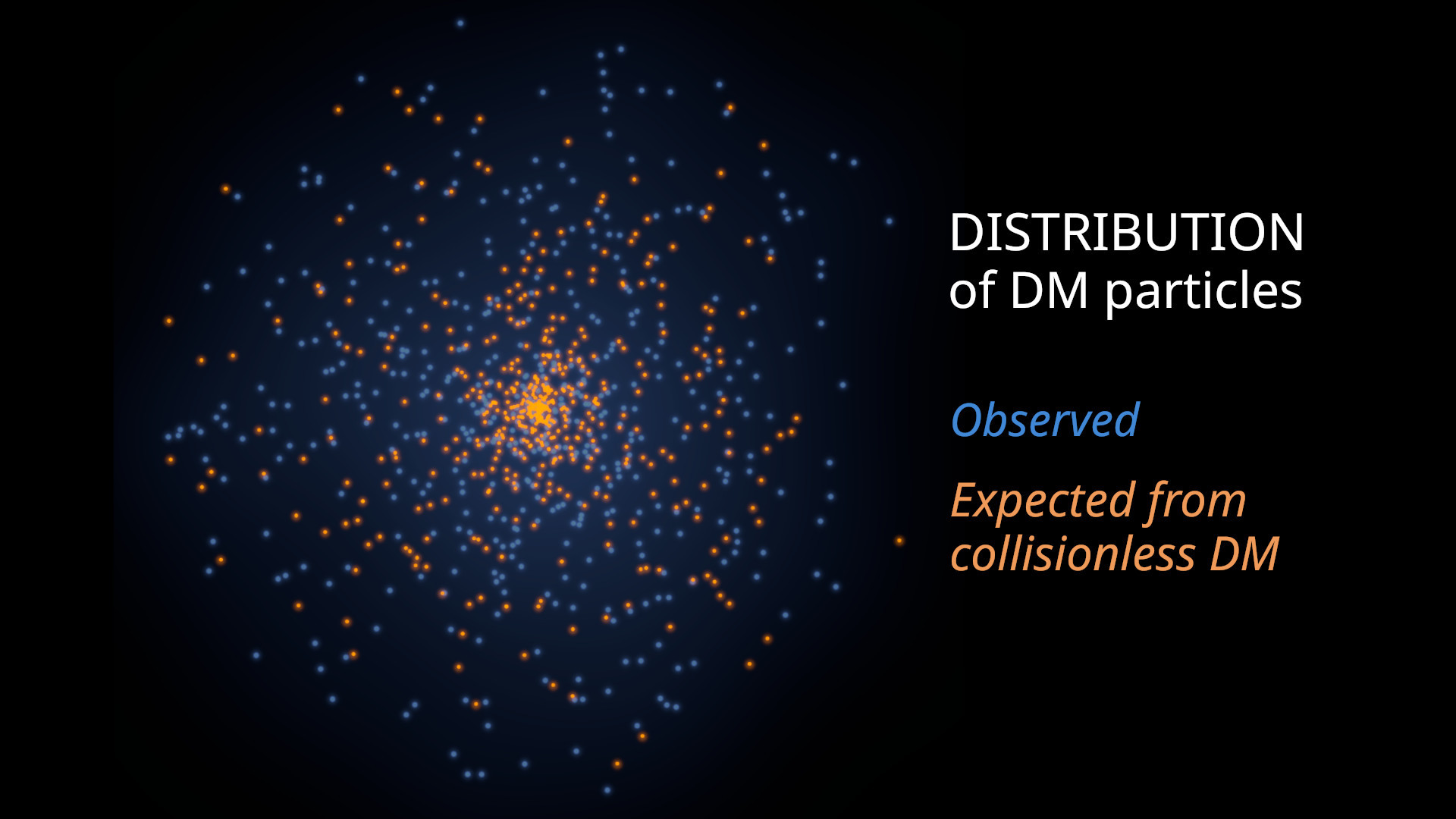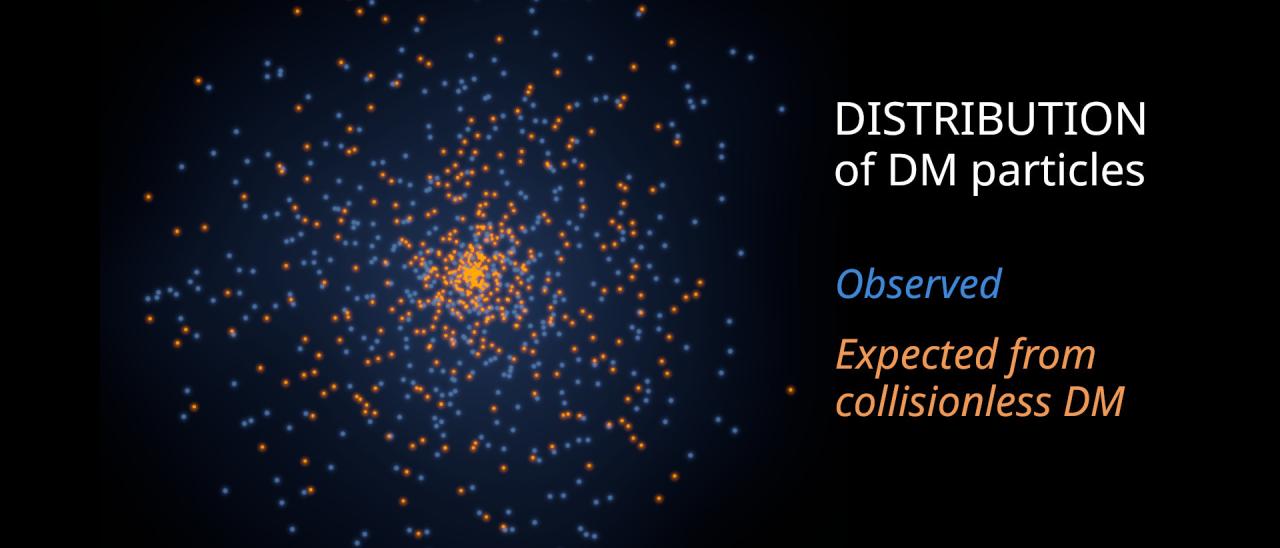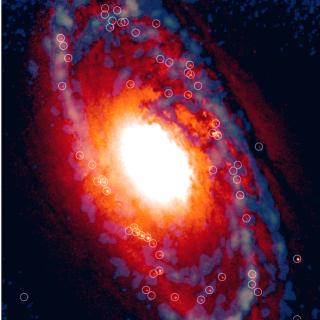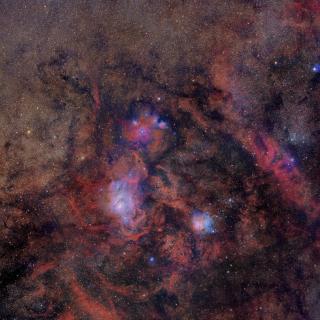The existence of dark matter is likely one of the most perplexing problems facing the scientific community, and unraveling its nature has become one of the primary goals of modern physics. In simple terms, we do not know what dark matter is made of, despite accounting for 85% of all the matter in the Universe.
A study led by the Instituto de Astrofísica de Canarias concludes that dark matter does not behave as described by the dominant paradigm, which states that dark matter particles only interact with each other and with ordinary matter through gravity. The IAC study reveals that dark matter feels other forces that, although subdominant, offer crucial new insights into the nature of dark matter.
The study, conducted using data from the Hubble Space Telescope, was published in the Astrophysical Journal Letters and co-authored by researchers from the IAC and the Universidad de La Laguna (ULL), Jorge Sánchez Almeida and Ignacio Trujillo, with the collaboration of Ángel Plastino from the Universidad del Noroeste de la provincial de Buenos Aires (Argentina).
Dark or Invisible
The scientific community has known for decades that more than 85% of the matter in the Universe does not emit any kind of radiation. That is why it is called dark matter, although some researchers suggest that "invisible matter" might be a more appropriate term.
But how do we study something that doesn't emit radiation? The answer lies in observing the motions of ordinary matter (i.e., stars and gas) under its influence. Astronomers have been able to determine that dark matter is required in large quantities, influencing known matter mainly through gravitational force.
For this reason, over the past four decades, the fundamental hypothesis has been that dark matter is composed of particles with mass but no other properties—no interactions between them or with other known matter beyond the force of gravity.
This model of dark matter is known as collisionless cold dark matter. It explains very well the effect of dark matter on the formation of structures in the Universe. However, it does not solve the fundamental mystery posed by dark matter, namely, what is it and how does its existence fit within the known particle model?
The IAC study rejects the idea that dark matter only interacts through gravity and was carried out with a new technique analyzing the distribution of light observed in very low-mass galaxies. Objects with only a few thousand stars.
Low-Mass Galaxies
In recent years, the study of the properties of low-mass galaxies, both their structure and their numbers, has gained attention in the scientific community because the collisionless cold dark matter model does not seem to fully explain these types of galaxies. Until now, none of the previous studies have been able to conclusively reject the simple dark matter model, as the effects of ordinary matter on galaxy properties are significant and compete with the effects of dark matter.

However, the IAC study takes it a step further. The IAC researchers focused on a very specific type of galaxy where the scientific community considers that the effects of ordinary matter play no role in shaping the galaxies. These ultra-faint dwarf galaxies, with a million times fewer stars than our Milky Way, serve as ideal laboratories to explore the nature of dark matter.
“Using a novel technique based solely on the distribution of stars, we have been able to reject the collisionless cold dark matter model with high statistical significance,” explains Jorge Sánchez Almeida. He adds that “this work, therefore, provides a solid observational basis from which to explore more complex dark matter models and reaffirms astrophysics as a cutting-edge science for understanding the intimate properties of the matter that makes up most of the Universe.”

The study has determined that dark matter appears to interact in a way that goes beyond what the current cosmological model assumes, in which dark matter particles only interact with each other through gravity. This new study suggests that dark matter does something more. For example, if it were made of particles, they would collide with each other like billiard balls. In the accepted collisionless dark matter model, one would pass through the other without noticing.
To reach this conclusion, the researchers discovered that the distribution of stars in these ultra-faint dwarf galaxies, instead of accumulating toward the center, remains constant (see Fig. 1). If this happens, it’s because "something" has interacted with them to change their course, and that something is dark matter, which, contrary to previous beliefs, is itself responsible for the shape of the halos of these galaxies. "One of the most fascinating aspects of this study is that all the galaxies studied have an identical stellar distribution. It seems that the galaxies have forgotten their own history. This can only be well understood if dark matter has erased these galaxies past, indicating that its intimate nature is much more complex than we thought," comments Ignacio Trujillo.
“After this study, the question of ‘what is dark matter?’ remains unresolved, but we now know something essential: dark matter is not what we thought it was until now”, explains Jorge Sánchez Almeida.
Link to the final article: https://doi.org/10.3847/2041-8213/ad66bc
Contact with researchers
Jorge Sánchez Almeida: jorge.sanchez.almeida [at] iac.es (jorge[dot]sanchez[dot]almeida[at]iac[dot]es)
Ignacio Trujillo: itc [at] iac.es (itc[at]iac[dot]es)



